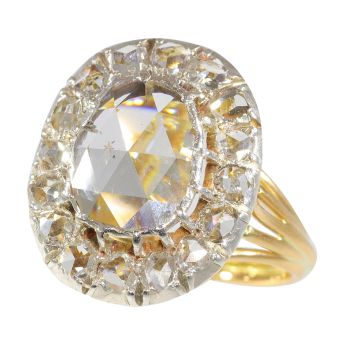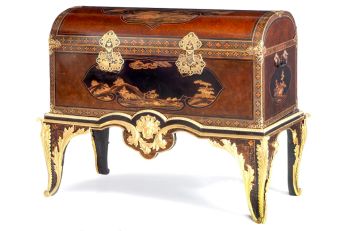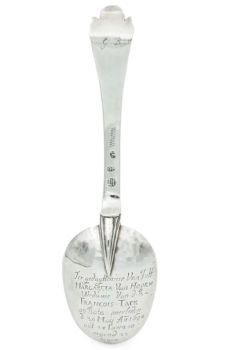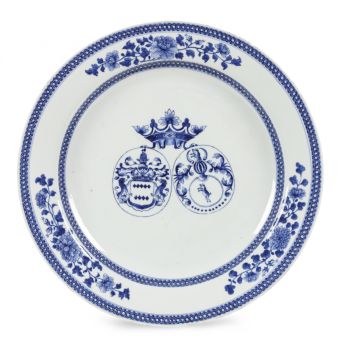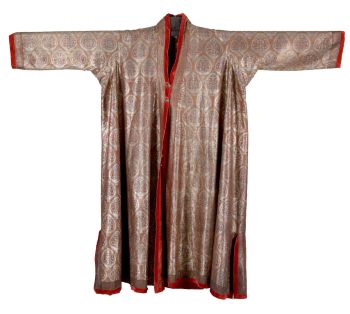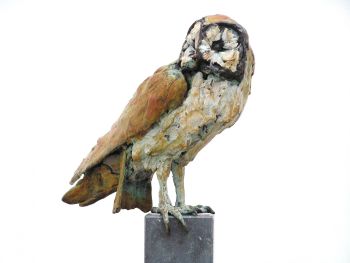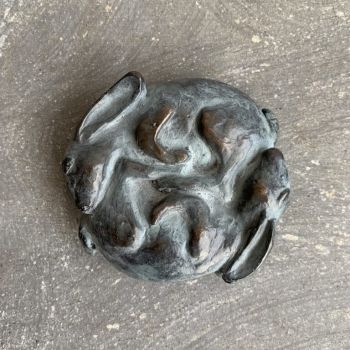A rare Dutch East India Company ‘VOC’ cannon 1764
Artista Desconhecido
MadeiraBronzeMetal
80 cm
Atualmente indisponível via Gallerease
Zebregs & Röell - Fine Art - Antiques
- Sobre arte
Amsterdam, signed and by Pieter Seest, dated 1764 and with Amsterdam town mark
The bronze 1/2-pounder was made for 17-caliber length, and has a later wood gun carriage.
The cannon bears a large VOC monogram and the A for the East India Company Chamber of Amsterdam.
L. 80 cm, grams
Provenance:
Collection H.L.Visser, the Netherlands
Literature:
R. Roth, The Visser Collection - Arms of the Netherlands, in the collection of H.L. Visser, vol II, Zwolle, 1996, cat. no. C37, pp. 138-139 (ill.)
Before the start of the Eighty Years War in 1568, ordinance manufacture was in the Southern Netherlands, particularly in Mechelen, and the Northern Provinces only had a tradition of church bell casting, not of gun founding. However, thanks to migration out of the Southern Netherlands due to Spanish religious intolerance, a large section of the population that had embraced the Protestant faith, including many wealthy entrepreneurs and skilled craftsmen, fled to the North. Cut off from the traditional supply of ordinance, the North, with the help of immigrants from the South, developed their own ordinance.
Already by the early 17th century, Dutch arms and ammunition were major export products to the rest of Europe and abroad. This was fuelled by the expansion of maritime trade through the East and West India Companies, who needed to arm their vast shipping fleets. A religious refugee from the bishopric of Liège, Louis de Geer, together with Walloon iron workers, initiated copper and iron mining and established the Finspång gun foundry in Sweden. Together with Elias Trip, his brother-in-law, a prominent Dutch merchant of guns and financier of the foundry in Sweden, he made Holland the military arsenal of the world, exporting military equipment to most countries in Europe and further afield.
Most guns were made of iron because they were cheaper. However, since iron affects the compasses aboard ships, bronze guns were placed near the helm. - Sobre artista
Pode acontecer que um artista ou criador seja desconhecido.
Algumas obras não devem ser determinadas por quem são feitas ou são feitas por (um grupo de) artesãos. Exemplos são estátuas dos tempos antigos, móveis, espelhos ou assinaturas que não são claras ou legíveis, mas também algumas obras não são assinadas.
Além disso, você pode encontrar a seguinte descrição:
•"Atribuído a …." Na opinião deles, provavelmente uma obra do artista, pelo menos em parte
• “Estúdio de…” ou “Oficina de” Em sua opinião um trabalho executado no estúdio ou oficina do artista, possivelmente sob sua supervisão
• "Círculo de ..." Na opinião deles, uma obra da época do artista mostrando sua influência, intimamente associada ao artista, mas não necessariamente seu aluno
•“Estilo de…” ou “Seguidor de…” Na opinião deles, um trabalho executado no estilo do artista, mas não necessariamente por um aluno; pode ser contemporâneo ou quase contemporâneo
• "Maneira de ..." Na opinião deles, uma obra no estilo do artista, mas de data posterior
•"Depois …." Na opinião deles uma cópia (de qualquer data) de uma obra do artista
• “Assinado…”, “Datado…” ou “Inscrito” Na opinião deles, a obra foi assinada/datada/inscrita pelo artista. A adição de um ponto de interrogação indica um elemento de dúvida
• "Com assinatura ….”, “Com data ….”, “Com inscrição ….” ou “Tem assinatura/data/inscrição” na opinião deles a assinatura/data/inscrição foi adicionada por outra pessoa que não o artista
Você está interessado em comprar esta obra de arte?
Artwork details
Related artworks
- 1 - 4 / 12
Artista Desconhecido
Japanese transition-style lacquer coffer 1640 - 1650
Preço em pedidoZebregs & Röell - Fine Art - Antiques
1 - 4 / 24Artista Desconhecido
The bell of the VOC fortress in Jaffna, Sri Lanka1747
Preço em pedidoZebregs & Röell - Fine Art - Antiques
 Com curadoria de
Com curadoria deDanny Bree
1 - 4 / 13Artista Desconhecido
Japanese transition-style lacquer coffer 1640 - 1650
Preço em pedidoZebregs & Röell - Fine Art - Antiques
Cornelis Anthonisz Theunissen
MUITO RARO PRIMEIRO MAPA IMPRESSO DE AMESTERDÃO, UMA CIDADE EM ASCENSÃO1544
€ 175.000Inter-Antiquariaat Mefferdt & De Jonge
 Com curadoria de
Com curadoria deDanny Bree
Artista Desconhecido
The bell of the VOC fortress in Jaffna, Sri Lanka1747
Preço em pedidoZebregs & Röell - Fine Art - Antiques
 Com curadoria de
Com curadoria deDanny Bree
 Com curadoria de
Com curadoria deDanny Bree
1 - 4 / 24Joris August Verdonkschot
Degas Revisited - In Stock2000 - 2020
Preço em pedidoMorren Galleries Utrecht
1 - 4 / 24- 1 - 4 / 12




